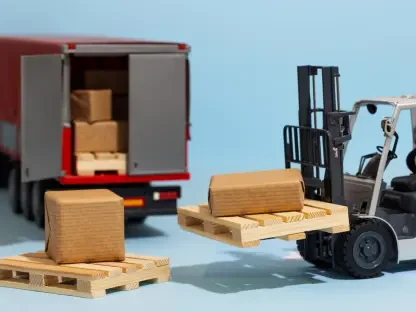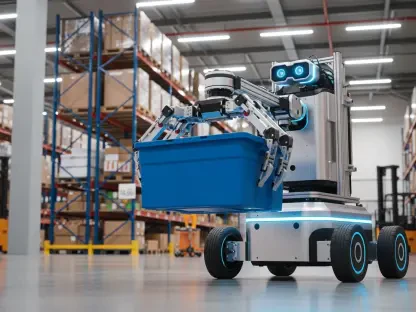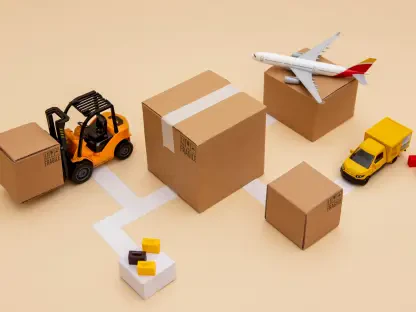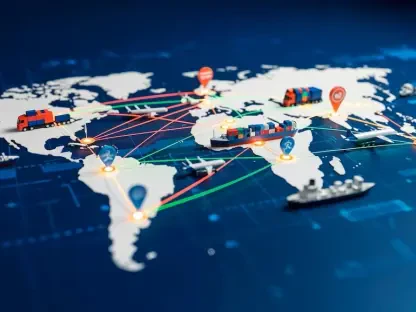In the world of logistics and supply chain management, innovation and efficiency are crucial for success. Today, we have the pleasure of speaking with Rohit Laila, an esteemed expert with decades of experience in the industry. With a keen passion for technology and automation, Rohit provides valuable insights into the developing fulfillment center by TGW Logistics for OneMed in Gothenburg and its impacts on the healthcare logistics landscape.
Can you provide an overview of the new fulfillment center being constructed by TGW Logistics for OneMed in Gothenburg?
The fulfillment center that TGW Logistics is building for OneMed in Gothenburg is quite an impressive project. Set to be completed by the fall of 2026, it is designed to be a high-performance hub focused on ensuring the efficient and timely distribution of medical supplies. The facility will feature advanced automation systems and is tailored to cater to OneMed’s extensive product range, reinforcing their role as a leading provider in Sweden’s healthcare sector.
What role does automation play in ensuring timely delivery of medical products at the new facility?
Automation is paramount in achieving reliable and on-time delivery in this facility. By leveraging automated systems, processes can be accelerated significantly, reducing the time from order to delivery. In a field like healthcare, where timely access to products can be critical, automation ensures that hospitals and healthcare providers receive what they need when they need it.
How does the high-performance order fulfillment system contribute to OneMed’s operations?
The high-performance order fulfillment system is integral to optimizing OneMed’s operations. It facilitates goods-to-person picking, which increases efficiency by minimizing the time workers spend searching for items. This system ensures that products are picked quickly and accurately, enhancing overall operational productivity and reliability.
Can you describe the features of the 24-meter-high shuttle warehouse and its significance for OneMed?
The 24-meter-high shuttle warehouse is a remarkable aspect of the new fulfillment center. It is equipped with over 80,000 storage locations, allowing OneMed to store a vast inventory of medical products. This extensive storage capability is significant as it helps maintain stock levels and manage a diverse product range, ultimately aiding in meeting customer demands swiftly.
What specialized requirements are needed for picking sterile products in a cleanroom environment?
Picking sterile products in a cleanroom requires stringent protocols to prevent contamination. This involves specialized intralogistics technology that can operate within these environments, maintaining sterility throughout the process. Ensuring these standards is crucial in handling sensitive medical products that are critical for patient safety.
How does TGW’s KingDrive conveyor technology contribute to energy efficiency in the fulfillment center?
KingDrive conveyor technology plays a vital role in energy conservation at the fulfillment center. Its energy-efficient design reduces power consumption while maintaining high operational throughput. This not only supports a more sustainable operation but also helps lower overall operating costs, aligning with modern energy efficiency goals.
What are the capabilities of the TGW warehouse software WERX, and how does it support operations?
The WERX software is a comprehensive tool that manages various aspects of warehouse operations. It is responsible for planning, controlling, and monitoring processes, ensuring that everything runs smoothly and efficiently. With precise control over inventory and workflow, WERX helps keep operations streamlined and adaptable to changing demands.
How does the intelligent picking robot RovoFlex leverage machine learning in its operations?
RovoFlex uses machine learning to enhance its picking operations, enabling it to adapt and improve over time. With each operation, it continues to learn and refine its methods, ensuring optimal performance. This self-improving capability is vital for maintaining high efficiency and accuracy in a dynamic warehouse environment.
What are some advantages of the RovoFlex’s ability to switch between manual and automatic picking?
The flexibility of RovoFlex to switch between manual and automatic picking offers significant operational advantages. It allows the system to adapt to varying demands and workforce availability, maximizing productivity and minimizing downtime. This adaptability is particularly beneficial in balancing workload during peak periods or unexpected demand surges.
Can you explain how the implementation of intelligent picking processes helps in minimizing shipping waste?
Intelligent picking processes help minimize shipping waste by accurately determining the necessary packaging size and reducing excess. By efficiently managing how products are picked and packed, these processes cut down on unnecessary materials, contributing to more sustainable practices and cost savings in shipping.
From your perspective, what makes the healthcare industry a promising area for growth?
The healthcare industry presents vast growth opportunities due to its fundamental role in public well-being and the consistent demand for innovative solutions. As populations age and healthcare systems expand, the need for efficient, scalable logistics solutions will only increase, making it an exciting sector for future developments.
How has the partnership between TGW Logistics and OneMed benefited both companies?
The collaboration between TGW Logistics and OneMed has been mutually beneficial, aligning both companies with a shared goal of efficiency and innovation. For OneMed, this partnership allows access to cutting-edge logistics technology, enhancing their service delivery. TGW benefits by expanding its footprint in the healthcare sector, showcasing its solutions in a demanding industry.
What shared values form the basis of the collaboration between TGW Logistics and OneMed?
The collaboration is built on shared values such as innovation, commitment to quality, and a focus on customer-centric solutions. Both organizations prioritize advancing healthcare logistics and delivering superior service, forming a strong foundation of mutual respect and shared objectives.
Are there plans for future projects between TGW Logistics and the Asker Healthcare Group?
While specific future projects are not detailed, there is a clear intention from both parties to continue working together. The promising growth of the healthcare industry offers numerous opportunities for further collaboration, ensuring that both companies can capitalize on future developments.
What specific elements are crucial for maintaining a strong collaborative partnership approach with OneMed?
Maintaining a strong partnership with OneMed requires open communication, a clear understanding of shared goals, and a commitment to continuous improvement. By fostering a collaborative culture and being responsive to each other’s needs, both parties can sustain a productive and beneficial relationship.
How significant do you think TGW Logistics’ role will be in future developments in the healthcare logistics sector?
TGW Logistics is poised to play a crucial role in the evolution of healthcare logistics, thanks to its innovative approach and robust infrastructure capabilities. As the demand for efficient healthcare supply chains grows, TGW’s expertise and advanced solutions will likely remain at the forefront of driving future industry advancements.









